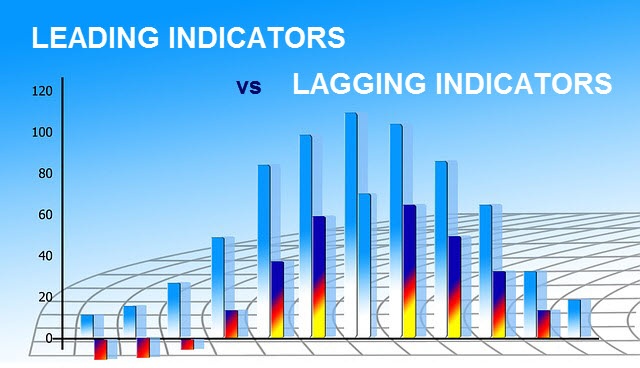In this article, Forex Prop Reviews will delve into different types of essential indicators for economic calendar trading. By incorporating these essential tools into our trading approach, we can enhance our decision-making process and increase our chances of achieving consistent profitability in the financial markets.
Essential Indicators for Economic Calendar Trading
As a trader, understanding and utilizing economic indicators is crucial for success in the financial markets. These indicators provide valuable insights into the health and performance of economies around the world, which in turn can greatly impact asset prices and market trends.
In this article, Forex Prop Reviews will explore some essential indicators for economic calendar trading.
Importance of economic indicators in trading
You might be wondering why economic indicators are so crucial when it comes to trading. Well, let me tell you, understanding and analyzing these indicators is essential for economic calendar strategies.
Economic indicators provide valuable insights into the overall health of an economy and can significantly impact market sentiment and direction. By keeping a close eye on these indicators, traders can make informed decisions about when to buy or sell assets.

Different types of economic indicators
When trading, it's crucial to understand the different types of economic indicators.
Leading indicators
Leading indicators are economic factors that change before the overall economy starts showing signs of a shift. These indicators give traders a valuable insight into potential future trends, allowing them to anticipate market movements and take advantage of opportunities.
Here are three key benefits of using leading indicators:
- Early identification of trends: Leading indicators provide early signals about the direction in which an economy is heading. By analyzing these indicators, traders can identify emerging trends before they become evident through lagging indicators.
- Predictive accuracy: Leading indicators have a strong correlation with future economic activity, making them highly reliable for predicting changes in the business cycle. By monitoring leading indicators such as consumer confidence, housing starts, or stock market performance, traders can gain insights into future market conditions and adjust their trading strategies accordingly.
- Opportunity for high returns: Since leading indicators provide information about potential future trends, acting on these signals can lead to profitable trading opportunities. By identifying early signs of economic growth or downturns, traders can position themselves strategically to profit from market movements before others catch on.
Lagging indicators
Lagging indicators are economic data points that confirm or validate a trend after it has already begun. These indicators are derived from historical data and, as the name suggests, they lag behind the current market conditions.
One popular lagging indicator is the unemployment rate. By looking at historical unemployment data, traders can get a sense of how an economy has performed in the past.
Another essential lagging indicator is inflation rates. By examining historical inflation data, traders can gain insights into price stability or volatility over time.
High inflation rates may suggest increased costs for businesses and consumers, which could impact spending patterns and affect various industries differently. Understanding these trends can help traders anticipate potential market reactions and adjust their strategies accordingly.

Gross Domestic Product (GDP)
Gross Domestic Product (GDP) provides a comprehensive measure of a country's economic performance and is an important factor for me to consider in my decision-making process as a trader.
It represents the total value of all goods and services produced within a country over a specific period. By analyzing GDP data, you can gain insights into the overall health of an economy and anticipate potential market trends.
Inflation Indicators
Inflation is the rate at which the general level of prices for goods and services is rising, eroding purchasing power. It is important to monitor inflation indicators because they provide insights into the health of an economy and help forecast potential changes in interest rates or monetary policy.
Two key inflation indicators to watch are the Consumer Price Index (CPI) and Producer Price Index (PPI).
The CPI measures changes in the price levels of a basket of consumer goods and services, such as food, housing, transportation, and healthcare. A higher CPI indicates that prices are increasing, which can lead to reduced consumer spending power. On the other hand, a lower CPI suggests price stability or even deflationary pressures.
The PPI measures changes in average selling prices received by domestic producers for their output. Rising PPI may indicate future increases in consumer prices as producers pass on higher costs to consumers.
Employment Data
One key factor to consider in making trading decisions is the significance of employment data. The employment data provides valuable insights into the overall health and stability of an economy.
It includes indicators such as the unemployment rate, job creation or loss, and average hourly wages. These indicators can have a significant impact on market sentiment and can drive major movements in currency pairs, stocks, and commodities.

Central Bank Decisions
Central bank decisions play a crucial role in shaping the direction of financial markets, with their policies often influenced by labor market indicators and employment data. As central banks have the authority to set interest rates and implement monetary policies, their decisions can have a significant impact on currency values, stock markets, and overall economic stability.
When interpreting central bank decisions, it's important to consider various factors that may influence their choices. Economic growth is one such factor.
Central banks closely monitor economic growth indicators such as GDP and industrial production to assess the health of an economy. If growth is strong, they may choose to raise interest rates to prevent inflationary pressures.
Conversely, if growth is weak or declining, central banks may lower interest rates to stimulate borrowing and spending.
Lastly, central bank decisions are influenced by global economic developments. Given the interconnectedness of global economies, changes in global economic conditions or geopolitical tensions can shape their policy choices.
Conclusion
In conclusion, economic indicators play a crucial role in trading as they provide valuable insights into the state of the economy and help traders make informed decisions. By monitoring these indicators and understanding their significance, traders can anticipate market movements and adjust their strategies accordingly.



